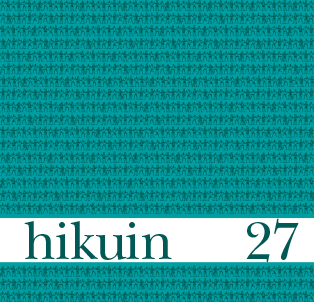Mellemørebetændelse
Resumé
Infectious middle ear disease
By Niels Lynnerup, Morten Qvist and Preben Homøe
Evaluation of general health is important in order to reconstruct the life conditions of earlier populations. This is usually done by analysing the skeletal remains of such populations. However, only few diseases leave their mark on the skeletons – indeed the most widespread and common diseases, such as pneumonia and gastrointestinal infections, which probably also accounted for the vast majority of deaths, do not leave any signs at all on the skeleton. Chronic conditions, on the other hand, such as tuberculosis and leprosy, do leave their mark, but the picture one gains by focusing on these diseases says more about the hardiness of a population (namely that individuals endured a lifelong disease) than about the general health. Palaeopathologists have sought for such markers, e.g. osteoporosis, Harris’ lines, dental enamel hypoplasia and porotic hyperostosis, but many of these methods either suffer from biased scoring methods, or the link to modern medical clinical observations is tenuous. We present a new method to evaluate general living conditions in earlier populations. Our method relates to the occurrence of chronic middle ear disease in childhood, and we think it has several advantages: correspondence between chronic infectious middle ear disease (IMED) and general living conditions is affirmed in modern medical epidemiological observations, the bone changes brought about by IMED occur in childhood, and the skeletal element used to evaluate the occurrence of IMED is the petrous part of the temporal bone in the skull, one of the sturdiest bones in the skeleton. We applied this method to three medieval skeletal materials from Nordby, an early medieval rural parish churchyard (function period approximately AD 1050-1250), Tirup, also a country parish churchyard, but from the later medieval period (function period approximately AD 1150-1350), and finally a monastic churchyard, used as parish churchyard for the citizens of Aalborg, one of the larger cities of medieval Denmark (function period approximately AD 1240-1530). The intact skulls from these churchyards were X-rayed from each side, and the area of the so-called pneumatic cells in the occipital bone was measured. From earlier studies we have proved the relationship between cell size as seen on X-ray photographs and occurrence of IMED earlier in life. Also, this relationship has been expressed mathematically, so that the left and right side cell area size may denote the risk of the individual having had or not having had IMED in childhood. The results showed that there was a pronounced rise in the frequency of IMED from the early to later medieval period. This seems to reflect the well-known agrarian crisis between the early and later medieval period: probably mainly due to land overuse and climatic changes, the population levels fell, and, as observed at Tirup, childhood mortality rose. Also, at this point in time, plague hit Denmark, further stressing population health. Our results also showed that the highest frequency was found in Aalborg, which may be explained by increased pathogen load in a more densely populated urban centre.
Referencer
Bastos, I.: Otitis media and hearing loss among children in developing countries. Lund 1994.
Boldsen, J. L.: Patterns of childhood mortality in Medieval Scandinavia. Rivista di Antropologia (Roma) 74, 1996, s. 147-159.
Christensen, V.: Boligforhold og sygelighed. København 1956.
Homøe, P.: Pneumatization of the temporal bones and otitis media in ancient and modern Greenlanders. Meddelelser om Grønland, Man & Society 22, 1997, s. 1-42.
Homøe, P., N. Lynnerup, N. Rasmussen & L. Theil Skovgaard: A statistical model estimating the occurrence of otitis media from temporal bone pneumatization. Acta Otolaryngologica 111, 1994, s. 1109-1116.
Kerr, A. G.: Scott-Browns Otolaryngology. Bath 1997.
Kieffer-Olsen, J., J. L. Boldsen & P. Pentz: En nyfunden kirke ved Bygholm. Vejle Amts Årbog 1986, s. 24-51.
Liebgott, N.-K.: Danmark i Middelalderen. København 1998.
Lynnerup, N.: The Greenland Norse. A biological-anthropological study. Meddelelser om Grønland - Man & Society 24, 1998, s. 1-149.
Merwe, N. J. van der: Reconstructing prehistoric diet. The Cambridge Encyclopedia of Human Evolution. Ed. S. Jones, R. Martin og D. Pilbeam. Cambridge 1992, s. 369-372.
Mollerup, L.: Rapport over de i felten gjorte notater om de humane middelalderlige skeletfund fra Aalborg Gråbrødrekloster AHM 2481. Upubliceret rapport, Aalborg Historiske Museum 1995.
–:Nordby kirkegård. Skeletfundene fra Viby tømmerhandel FHM 3970. Upubliceret rapport, Forhistorisk Museum, Moesgård 1996.
Møller, S. B.: Aalborg Gråbrødrekloster. Bygningshistorien primært belyst ud fra de arkæologiske kilder. Upubliceret speciale, Afdeling for Middelalderarkæologi, Århus Universitet 1997.
Nielsen, J. N.: Alabu. Skalk 1997 nr. 5, s. 5-9.
Porsmose, E.: Landsbyens verden. Middelalderens Danmark. Red. P. Ingesman, U. Kjær, P. K. Madsen & J. Vellev. København 1999, s. 170-187.
Qvist, M.: Otitis Media i to Middelalderlige skeletmaterialer. Upubliceret diplomstudieafhandling, Odense Universitet 1998.
Skov, H.: FHM 3970 Viby Tømmerhandel (Nordby kirkegård) udgravningsrapport. Upubliceret rapport, Forhistorisk Museum, Moesgård 1996.
Stuart-Macadam, P.: Porotic Hyperostosis: a new perspective. American Journal of Physical Anthropology 87, 1992, s. 39-48.
Downloads
Publiceret
Citation/Eksport
Nummer
Sektion
Licens
Forfatter og Forlag.





